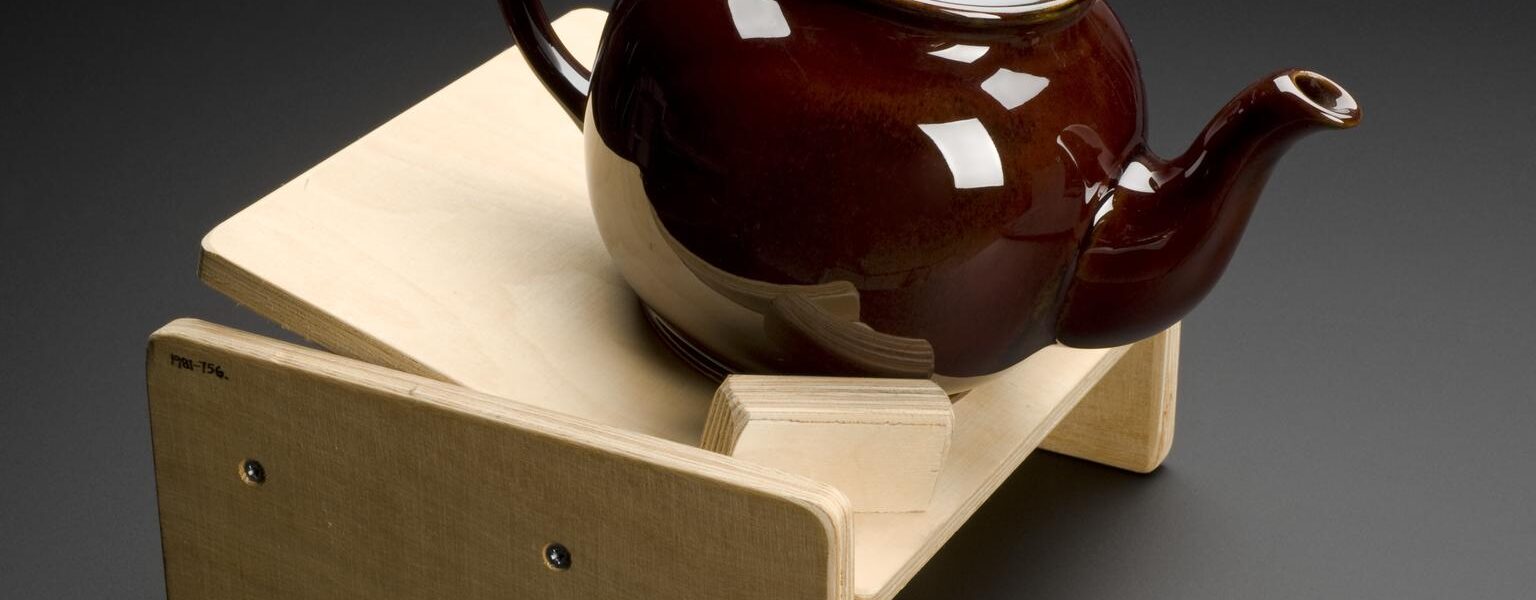In my role as a Collections Decant Assistant at Blythe House in London I help prepare objects from the Science Museum Group Collection for transport to their new, purpose-built home at the National Collections Centre in Wiltshire.
This is an exciting time for the Science Museum Group, and also for me, as I get to work with and explore thousands of objects which are not on display!
Recently I have been carefully packing Orthopaedics objects, which include prosthetics and tools to make everyday activities easier for disabled people.
Enjoying a nice cup of tea is part of many people’s daily routine. When making a brew you might think about the type of tea or how much milk to add, but how many of us question how to pour the tea?
For those with arthritis this is a necessary concern as the condition can make it difficult or painful to lift items.
While your brain may conjure up a complex electronic devices, probably connected to the latest app, to provide a solution, one example from the collection is far more straightforward: a teapot stand.

Stands such as this one were specifically designed to securely hold the pot and gently tilt it on a hinge towards a cup. As a result, users with stiff or painful joints can steadily pour tea themselves. It might also have been useful for people with tremors, such as those diagnosed with Parkinson’s disease.
This design is from 1980 and made of plain plywood. More modern and sleek designs continue to be produced today. Two-handled teapots also offer extra support, making them popular choices for those who struggle to lift with one hand.
Of course tea is not the only issue faced by those with arthritis. An estimated 10 million people in the UK have arthritis and there is currently no cure. Since hands are a commonly affected areas for people with arthritis, this can cause severe difficulties for otherwise simple tasks such as cooking, dressing or turning a tap.

Because of this, a major part of managing symptoms of osteoarthritis (the most common form of arthritis) is to reduce joint strain by using special devices such as the tea pot pourer. As well as offering physical relief, adapting everyday items such as kitchen utensils allows people with arthritis to maintain independence.
Today there are a wide variety of devices designed to help people with arthritis and similar conditions. Through my work with the collection, I have seen a range of these tools, including a tap-turning device, extra thick cutlery and a specially designed mug.

I have been amazed that the genius of these objects often lies in their simplicity. While some of these items are more than 40 years old their design has proved enduring and modern equivalents still are available to this day.
Such seemingly small adjustments can make life much easier for those living with arthritis while researchers and healthcare professionals continue to search for a cure.
